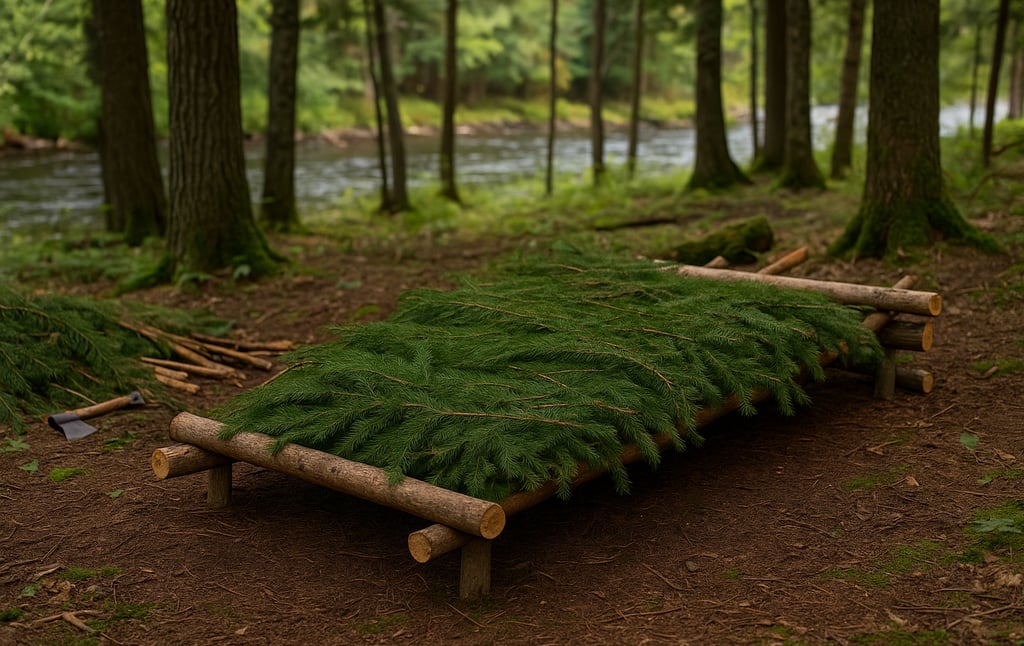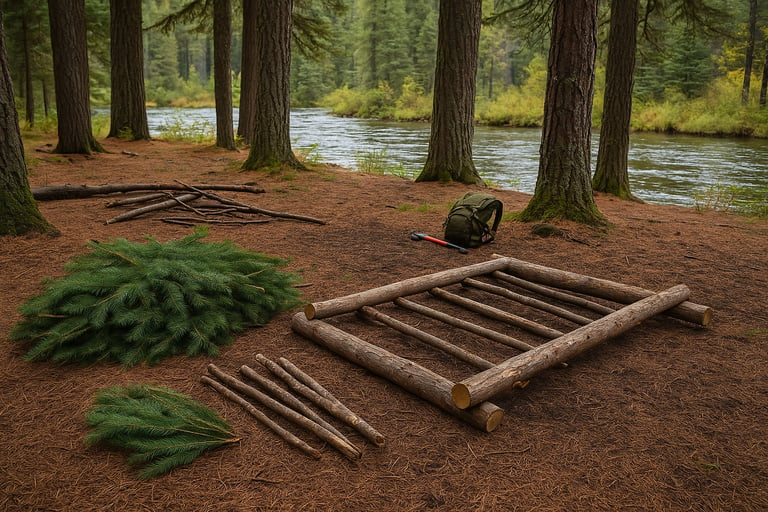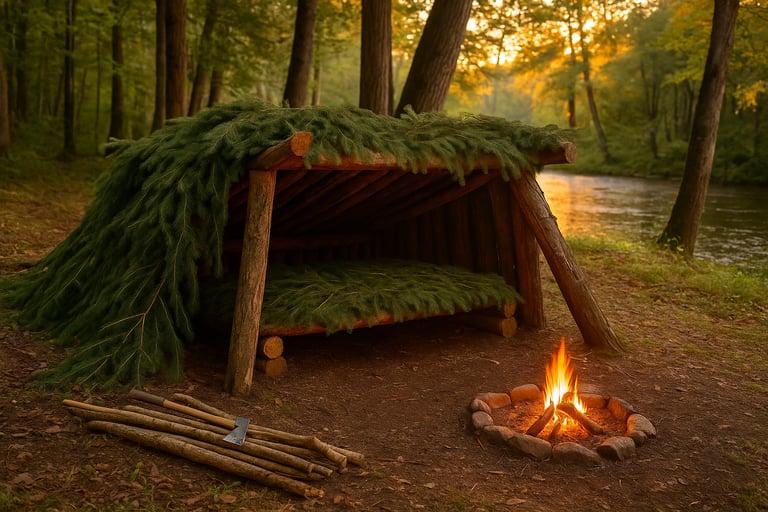How to Build a Bough Bed Shelter: Stay Warm and Comfortable in the Wild
Learn how to build a bough bed shelter for wilderness survival. This step-by-step guide shows how to create an insulated natural sleeping platform using evergreen branches and forest debris.


How to Build a Bough Bed Shelter: Stay Warm and Comfortable in the Wild
When you're out in the wilderness, a cold, damp night on the ground can ruin even the best-planned adventure. That’s where a bough bed shelter comes in. It’s one of the most effective ways to insulate your body from the cold ground, and it doesn’t take much to build.
A bough bed isn’t just a place to sleep, it’s a survival tool. By raising yourself off the ground and using insulating materials from nature, you can dramatically improve your comfort, warmth, and energy levels when spending the night outdoors. And the best part? You can build one using nothing but materials from the forest floor.
Let’s walk through everything you need to know to build one right.
Why a Bough Bed Is Essential for Survival
Even if you build the perfect lean-to or tarp shelter, lying directly on the ground will still sap your body heat. The ground acts like a sponge, pulling warmth away from your body — especially in cold or damp environments. A bough bed solves this by creating an elevated, insulated surface to sleep on.
The structure of a bough bed provides cushion, airflow, and thermal protection. It also keeps you dry, even when the forest floor is damp. That means better sleep and better survival odds in any backcountry scenario.
If you’re planning to spend the night in a wilderness shelter, a tree pit shelter can also help trap body heat in snowy environments. And if you need fast, all-around protection, consider starting with a lean-to shelter for simplicity and structure.
What You’ll Need from the Forest
To build a bough bed, you'll need a solid base made from logs or thick branches and a thick pile of green boughs — ideally from pine, fir, spruce, or other soft-needled trees. These boughs act as natural insulation and provide a springy, comfortable surface to sleep on.
You’ll also want some cross-poles or medium-sized sticks to create a stable platform. If you have cordage, that helps with lashing the frame together, but it’s not strictly necessary if you wedge the structure well into the ground.
Step-by-Step: How to Make a Bough Bed Shelter
Start by finding a flat area that’s dry and not exposed to wind. Lay two thick logs parallel to each other, slightly longer than your height. These will act as the sides of the bed frame.
Next, gather cross-supports, these can be smaller logs, thick sticks, or even a lattice of branches, and place them across the side logs like a rack. This forms the platform that will hold the boughs. If you have rope or vines, you can lash these cross-pieces in place for added stability.
Once your frame is sturdy, begin layering your boughs. Start with the thickest and longest needles on the bottom. Place each layer perpendicular to the one before it to reduce gaps and add loft. You want the bough pile to be at least 6 inches thick — more if the weather is cold or the ground is especially wet.
You can adjust the firmness of your bed by how densely you pack the boughs. For added comfort, use dry leaves or grasses between layers or on top.
Keeping Warm, Dry, and Comfortable Through the Night
Once your bough bed is complete, it’s time to think about positioning. If you’ve built a lean-to, A-frame, or tarp shelter, place your bed inside to protect it from wind and rain. If you’re using a fire for warmth, make sure the bed is close enough to feel the heat but far enough to avoid sparks.
Make sure to insulate your head and feet — those are the first areas to lose heat. You can use extra boughs or even clothing stuffed beneath or around your sleeping area for better protection.
If you’re staying multiple nights, plan to refresh or rebuild your bed every few days, as the boughs will compress and lose their spring over time.
When to Use a Bough Bed Shelter in the Wilderness
A bough bed shelter is ideal when you’re planning to stay in one spot overnight, especially in cold, wet, or snowy environments. It’s not just for comfort, it’s for safety. Hypothermia from ground exposure can happen even in above-freezing temperatures, and this type of shelter greatly reduces that risk.
Even if you already have a tarp or sleeping bag, adding a bough bed underneath improves warmth and rest. And if you have nothing but the forest around you, a well-built bough bed may be your best tool for getting through the night in one piece.
What's more, a bough bed is even more effective when paired with layered protection like a snow cave shelter or a Quinzhee shelter if you’re in deep winter conditions.




© 2025. All rights reserved About | Privacy Policy | Terms and Conditions | Affiliate Disclosure | Disclaimer


